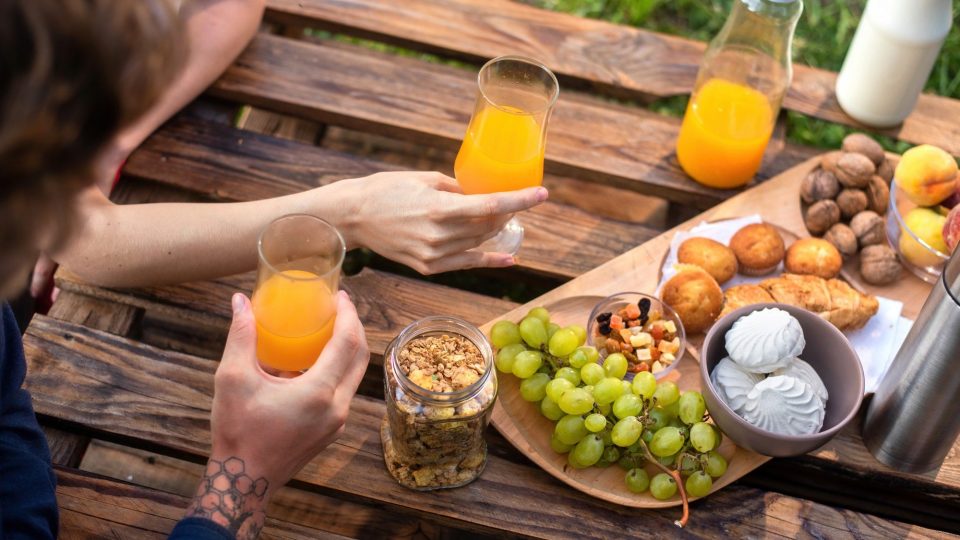Giving yourself a gut check could be one of the healthiest things you can do. The gut contains over 70% of our immune system. When the gut is healthy, the whole body benefits. Diets high in sugar and processed foods have less bacterial diversity and more of the “bad” germs linked to obesity. A varied diet rich in vegetables, fruits, and beneficial bacteria, on the other hand, helps seal your gut lining and prevents bad bacteria from entering the blood. So, how can we increase the number of healthy bacteria in our diet? It’s simpler—and more delicious—than you would believe.
The following diets are good for your guts:
Kefir
Kefir is a naturally effervescent and sour liquid yogurt. It is fermented for 5-8 times longer than yogurt, allowing all of the healthy bacteria to proliferate. It comprises up to 12 strains (versus about two in regular yogurt). It’s ideal for smoothies and overnight oats; simply replace yogurt or milk with kefir. Another reason to adore it: each cup has 11g of protein. Buy the plain variety to eliminate extra sugar and sweeten with your fruit. Not a fan of tarts? To help neutralize the tanginess, buy full-fat varieties or add a dollop of almond butter.

Kimchi
Kimchi is a crunchy, spicy Korean side dish made by combining cabbage and other vegetables with garlic, ginger, chili peppers, and fish sauce, then fermenting it. Fermentation is a process that involves breaking down natural sugars to produce lactic acid, a preservative that inhibits the growth of unwanted bacteria and even produces B vitamins and other beneficial minerals. skin cells Fermentation is similar to pre-digestion in that it makes difficult-to-digest minerals more accessible. It also gives foods an extremely sour, pungent flavor. Some people find kimchi’s spiciness and pucker tartness difficult to consume on their own, but it’s a terrific condiment for a variety of foods.
Kombucha Tea
This fermented beverage is created by combining mildly sweetened tea with a colony of probiotic-rich bacteria and yeast (called a SCOBY). It’s effervescent and puckery, like a fruity probiotic-packed soda — cool, bubbly, and sweet — but with 45 fewer grams of sugar (approximately 11 teaspoons). There are hundreds of variations available in today’s supermarket, and each one is unique — try a couple to find a brand you prefer, or create your own!
FOODS HIGH IN PROBIOTICS
Prebiotics act as “food” for all the good bacteria we wish to grow in our stomachs. Prebiotics are required to stimulate probiotics. Prebiotics are high in inulin, an indigestible fiber that boosts the formation of friendly bacteria in the gut. Whole wheat, leeks, cabbage, artichokes, dandelion greens, flaxseed, seaweed, and even breast milk are food sources.

Miso
This delicious, nutty paste is derived from fermented soybeans, and it’s high in probiotics and umami flavor concentrated salt level (approximately 400-600mg per tablespoon) helps prevent these healthy bacteria from contamination, and the flavor is significantly milder than most other fermented goods. Miso becomes darker (typically redder), saltier, and deeper in flavor as it ferments longer. Another reason we like miso is that it’s versatile. It’s great in soups, dressings, grains, and glazes for roasted vegetables and proteins, like this Miso-Ginger Glaze.
Furthermore, take care of your intestines. Increase your intake of whole foods that are naturally high in probiotics and prebiotics to promote a diverse bacterial ecology. Consume more fermented foods and minimize processed foods, particularly those heavy in sugar and artificial additives. A healthy gut and microbiota not only improve immunity and digestive health but also stimulate the brain. That is fodder for contemplation!

